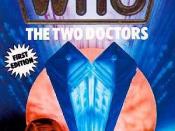The doctor-patient relationship has been defined differently through the years. In the beginning it developed into a 'common calling' which meant doctors practiced medicine as a duty to their patients. Laws were developed to protect patients, therefore doctors used proper care and expert skill. In the past six centuries, medical malpractice has increased, which lead to revision and addition to the law. Liability was introduced along with the 'GIANT of all torts', negligence. Now in today's society, a doctor's duty is to use reasonable care, skill and judgment in the practice of his/her profession and when negligent, take full responsibility.
What is malpractice? Malpractice is negligence. Negligence is a tort. A tort is a civil wrong, therefore malpractice is a civil wrong. In its simplest terms, malpractice has four essential elements: 1) Duty. Every health care provider assumes a duty when starting consultations, diagnosis, or treatment of a patient. The duty arises from an expressed or implied contract.
2) Breach. For example, if you fail to make a correct diagnosis once you have assumed the duty to do so, you have created a 'breach of duty', due and owing to the patient. 3) Causal Connection. Your failure to correctly diagnose, ('duty' you 'breached') the duty due and owing to the patient and as a direct and proximate cause of your breach, caused damages. 4) Damages. The result of your failure to diagnose correctly, the patient sustained damages in the form of an additional hospital stay, complications that may or may not be of a permanent and continuing nature. (Brooten Jr., Kenneth E. p. 1)
Negligence is the most common civil suit filed against doctors. Liability for negligence will not be found unless the following factors are present: (a) the defendant must owe a duty to the plaintiff to exercise care;...



Great job
good job .keep on writing
3 out of 4 people found this comment useful.